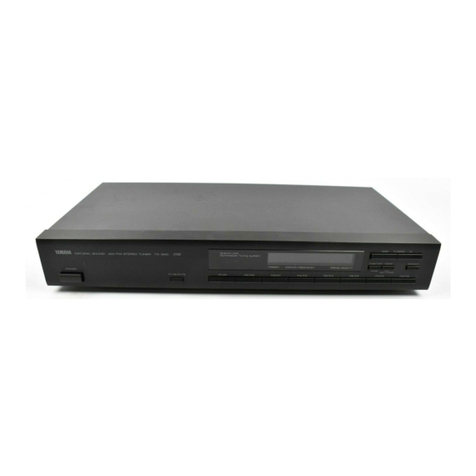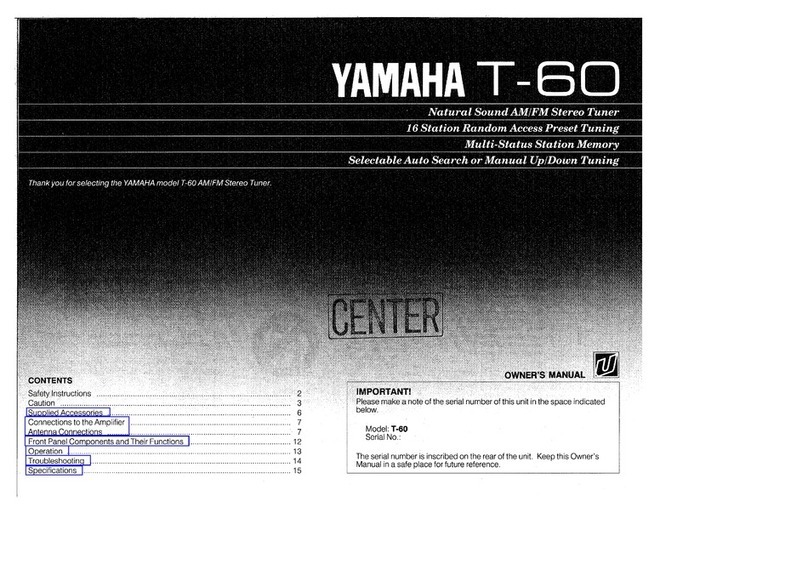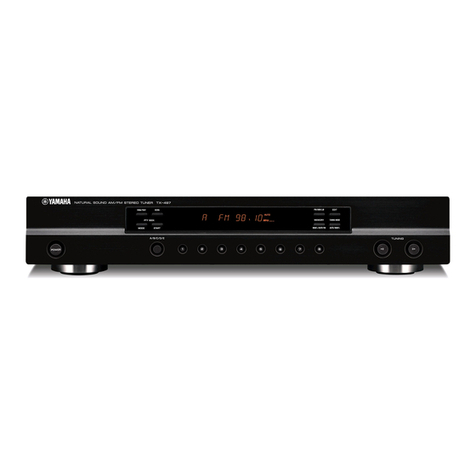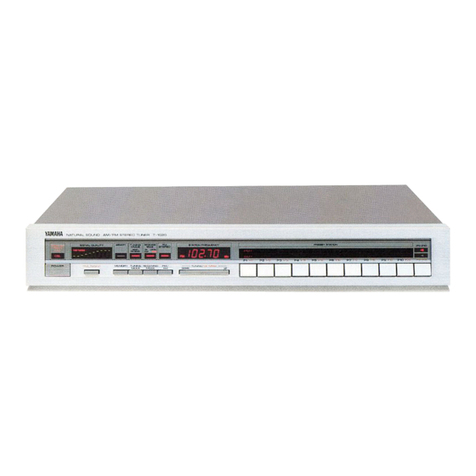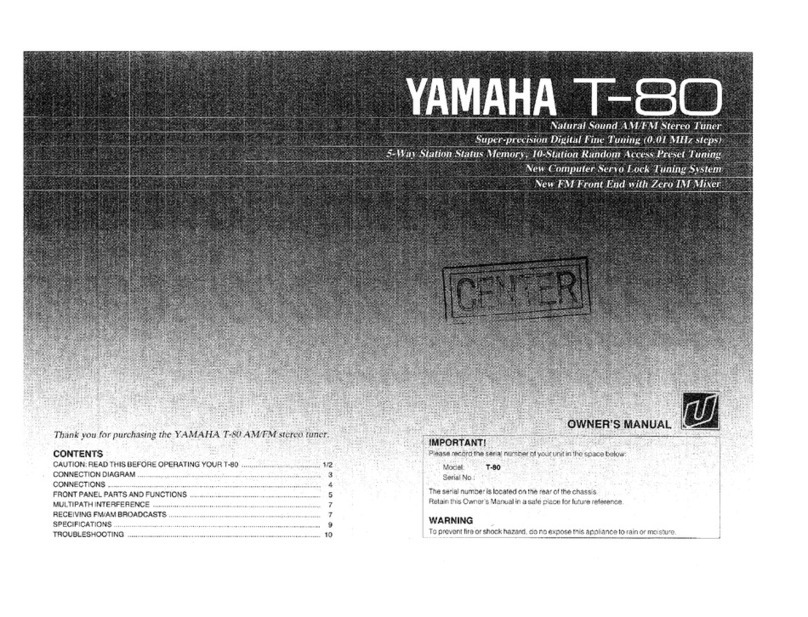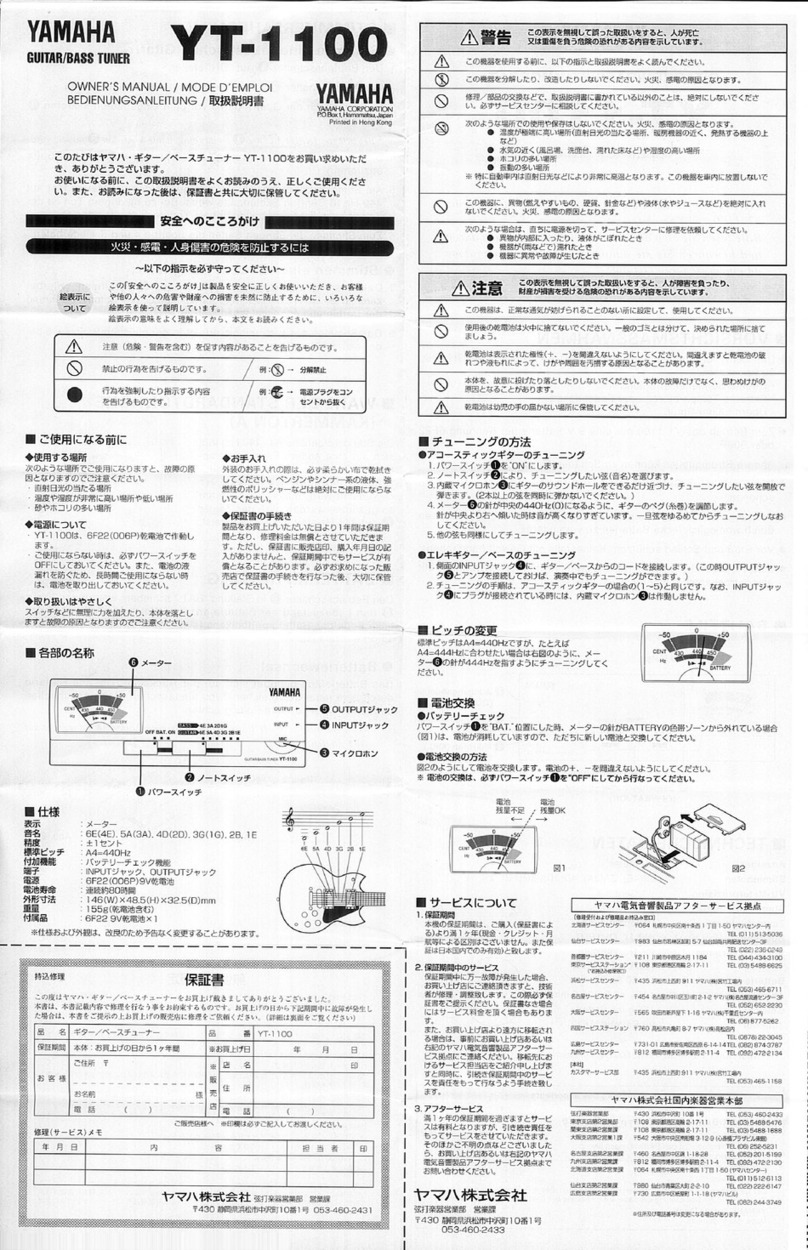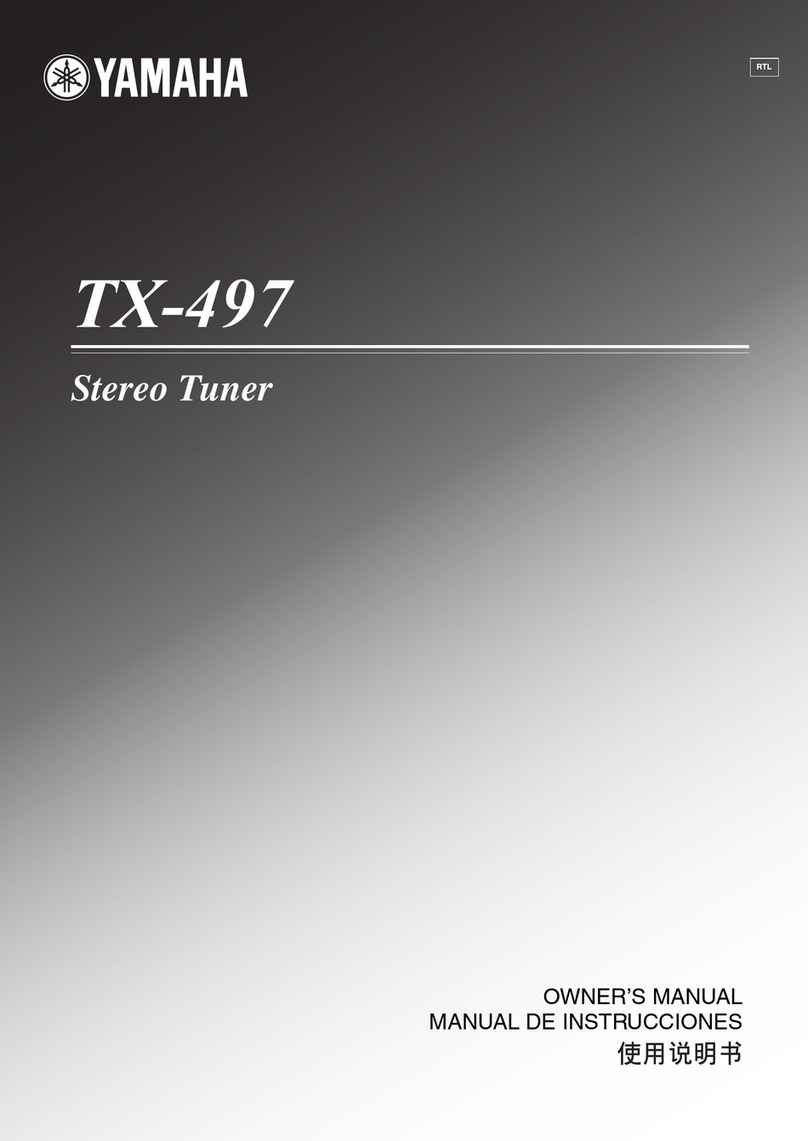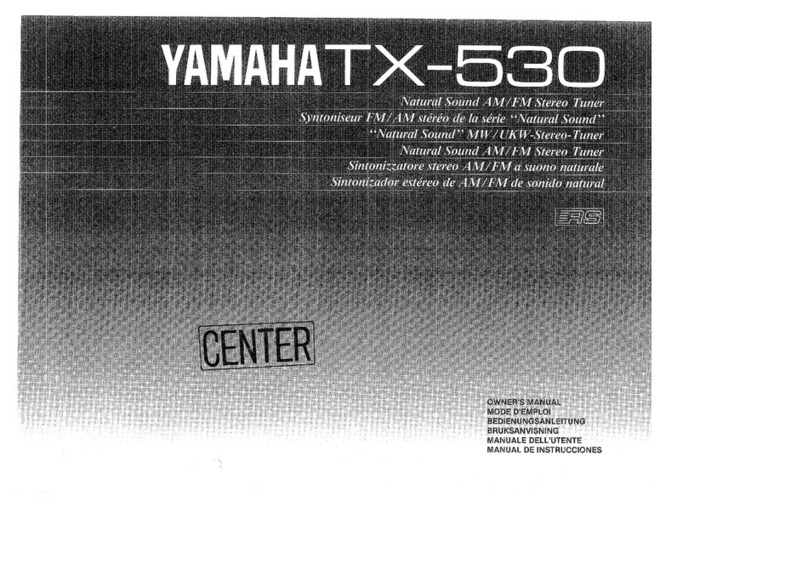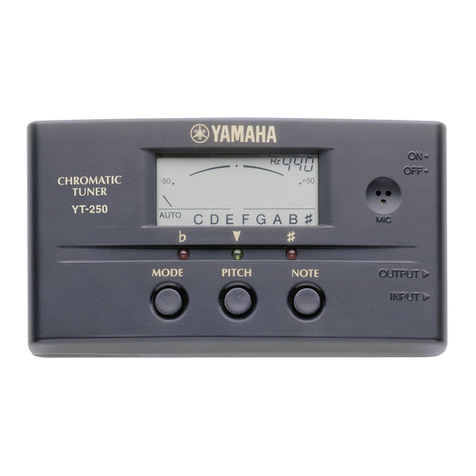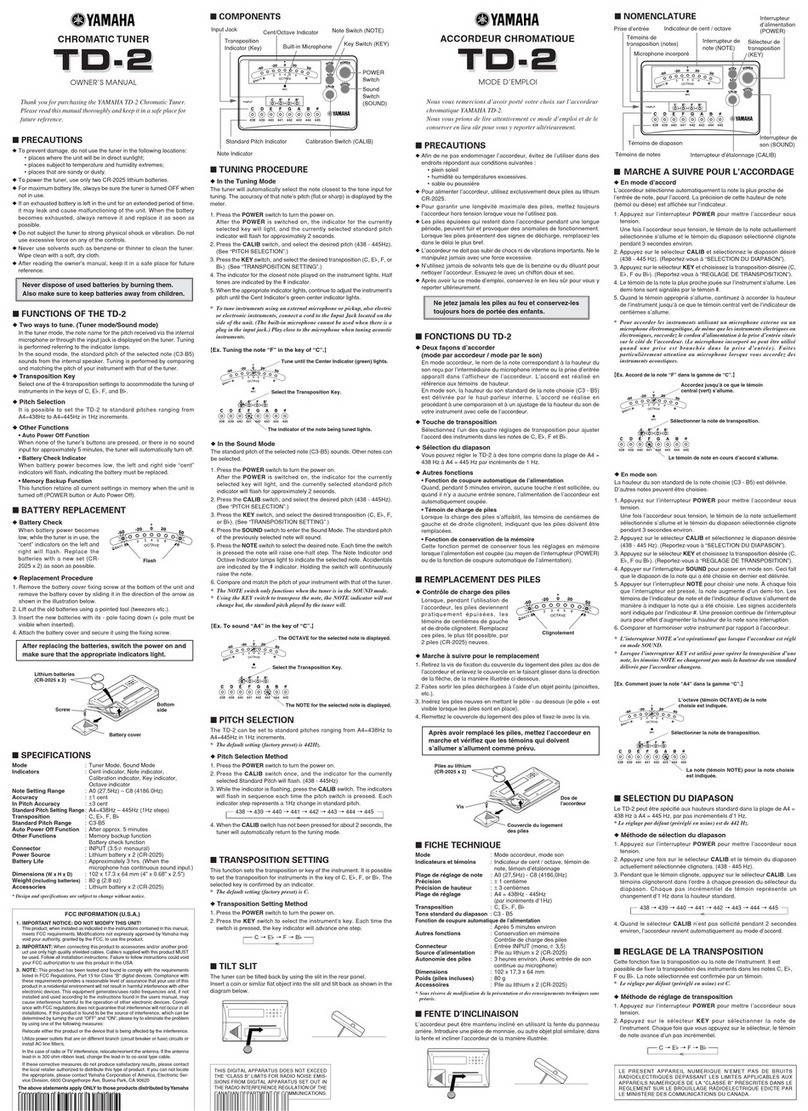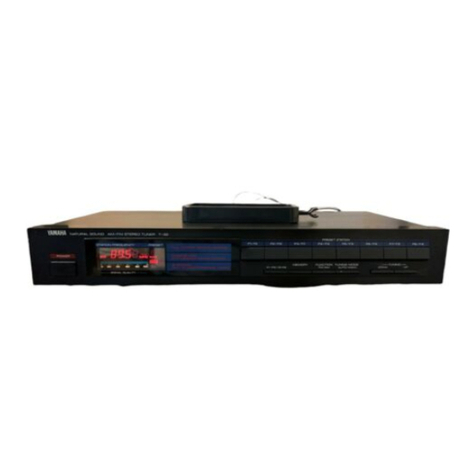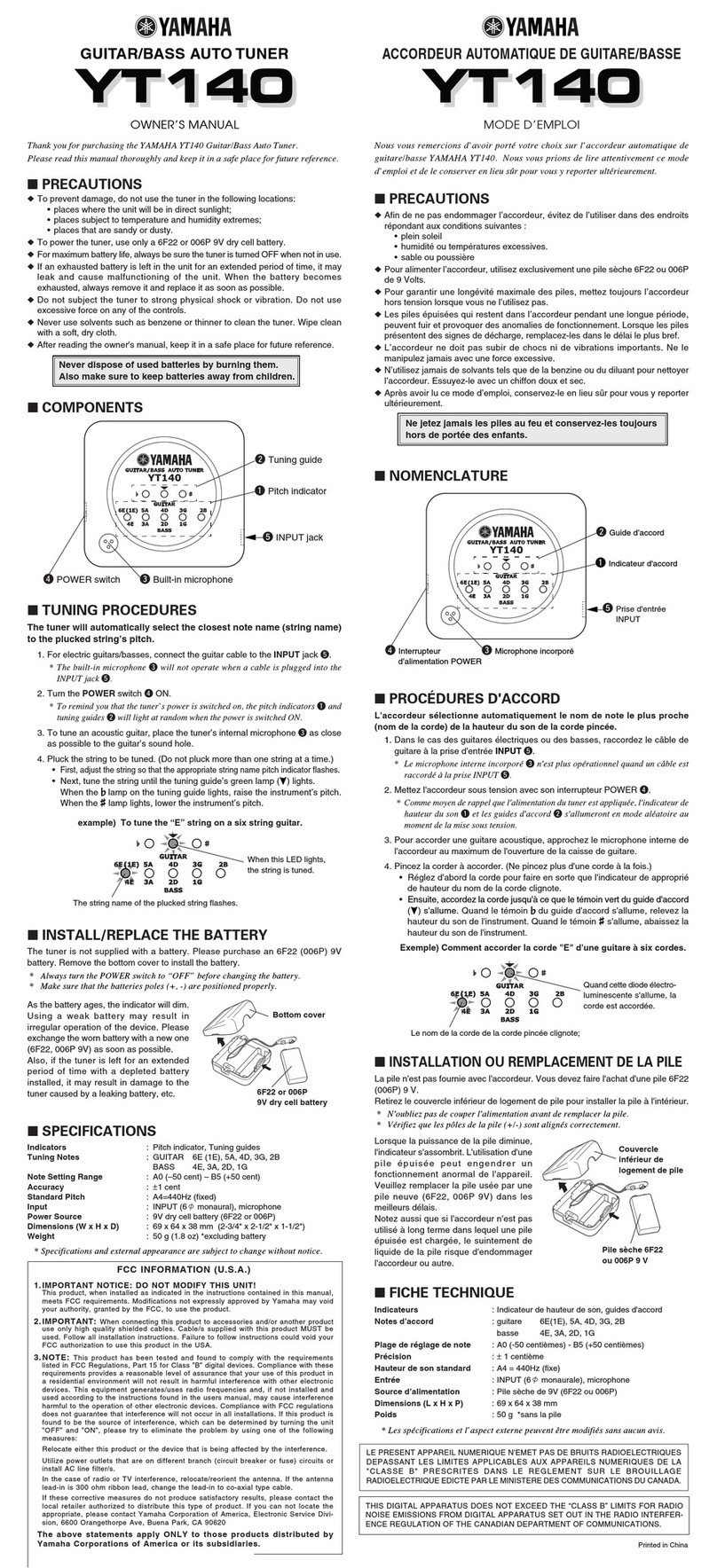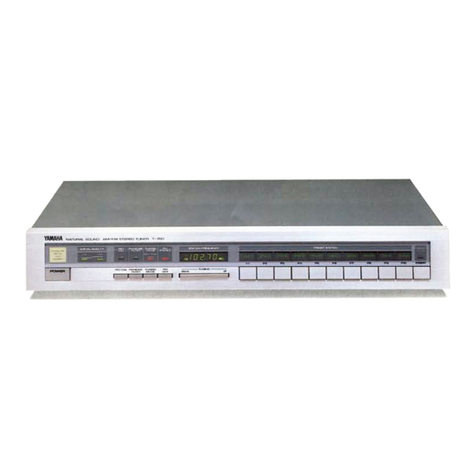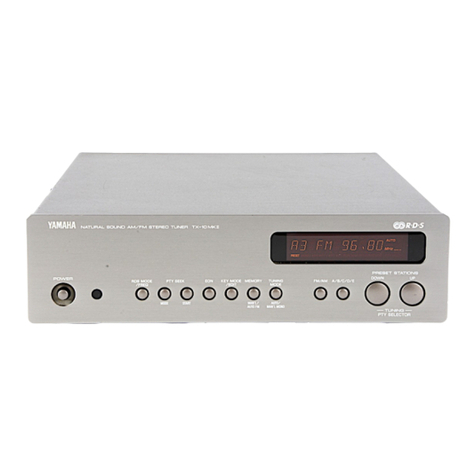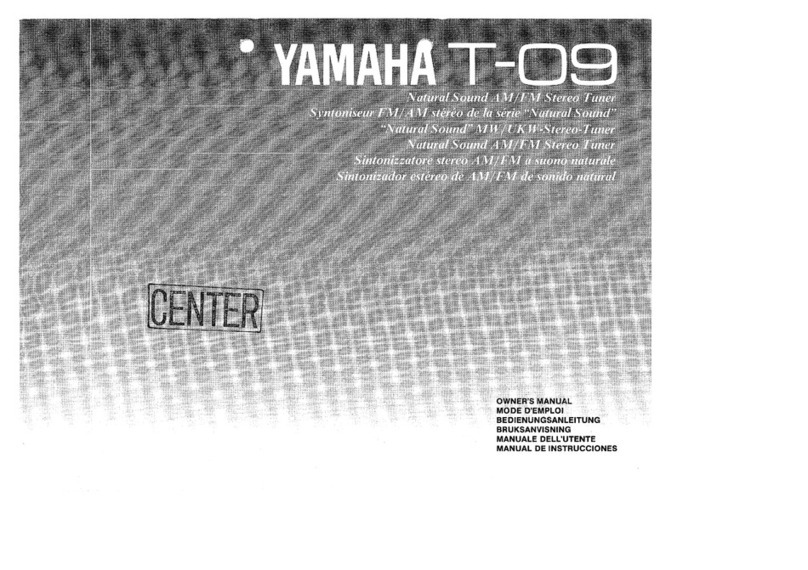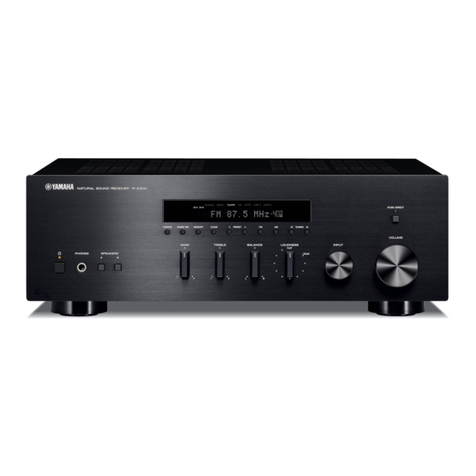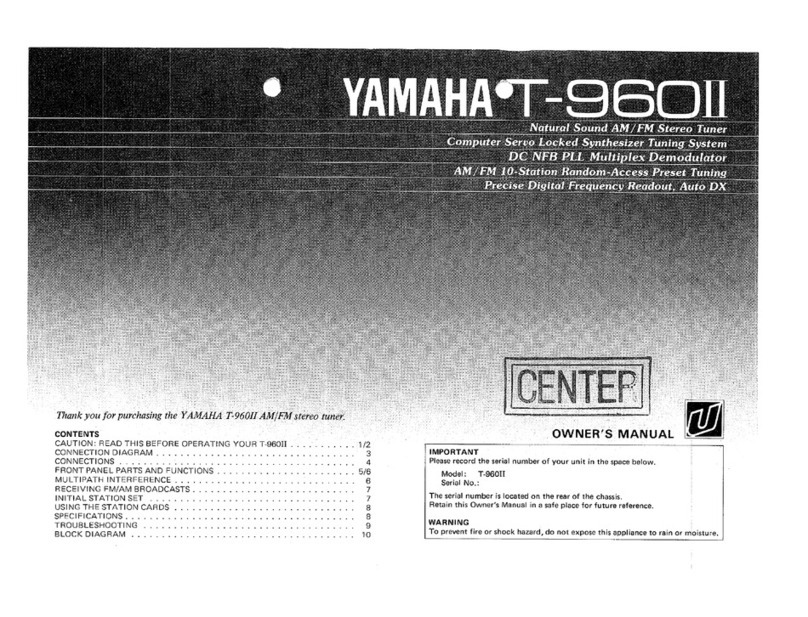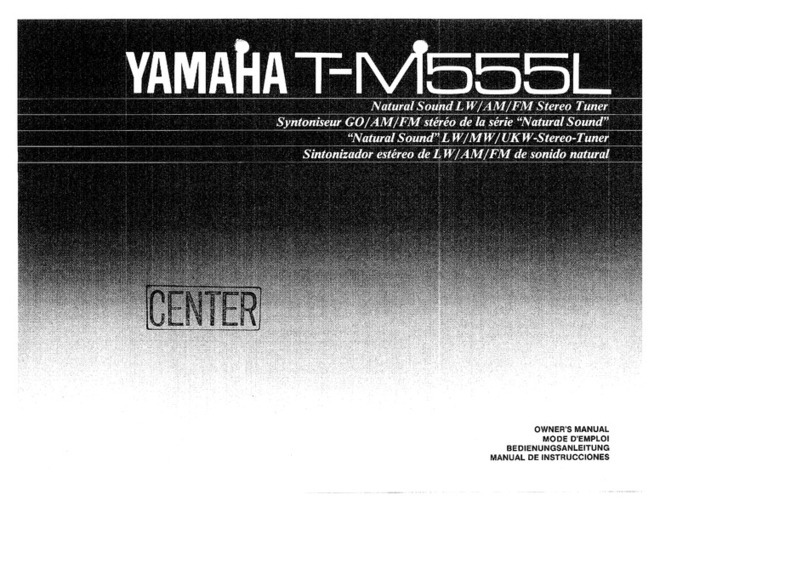
3
TX-497
TX-497
FM SECTION /FM
部
Tuning Range /
受信周波数範囲
U, C models ..................................... 87.5 to 107.9 MHz
R, T, A, B, G, E, L models ............ 87.50 to 108.00 MHz
J model .............................................. 76.0 to 90.0 MHz
50dB Quieting Sensitivity /50dBSN
感度
(IHF)
U, C, R, T,A, L, J models
Mono ................................................. 1.55 µV(15.1 dBf)
Stereo (1 kHz 100% MOD) 21 µV(37.7 dBf)
Usable Sensitivity /
実用感度
(DIN)
B, G, E models
Mono (S/N 26 dB) ............................................... 0.9 µV
Stereo (S/N 46 dB) .............................................. 24 µV
Image Response Ratio /
イメージ妨害比
U, C, R, T, J models ............................................. 40 dB
A, B, G, E, L models ............................................ 80 dB
IF Response Ratio /IF
妨害比
..................................70 dB
Spurious Response Ratio /
スプリアス妨害比
U, C, R, T, J models ............................................. 60 dB
A, B, G, E, L models ............................................ 70 dB
Alternate Channel Selectivity /
実行選択度
U, C, R, T, J models ............................................. 85 dB
A, B, G, E, L models
Selectivity (two signals) 40 kHz Dev. ±300 kHz ... 70 dB
Signal to Noise Ratio /
信号対雑音比
(DIN-Weighted 40 kHz)
U, C, R, T, J models
Mono ....................................................................82 dB
Stereo .................................................................. 76 dB
A, B, G, E, L models
Mono ....................................................................75 dB
Stereo .................................................................. 70 dB
Harmonic Distortion /
歪率
(1 kHz)
Mono .................................................................... 0.1 %
Stereo (B, G: 40 kHz Dev.) ...................................0.2 %
Stereo Separation /
ステレオセパレーション
(1 kHz)
B, G: 40 kHz Dev. ................................................ 50 dB
Frequency Response /
周波数特性
30 Hz to 13 kHz .............................................. 0±0.5 dB
MW SECTION /AM
部
Tuning Range /
受信周波数範囲
U, C, R models ....................................530 to 1710 kHz
T, A, B, G, E, L, J models .................... 531 to 1611 kHz
Usable Sensitivity /
実用感度
............................ 200 µV/m
Selectivity /
選択度
..................................................
32 dB
Signal to Noise Ratio /
信号対雑音比
...................... 50 dB
Image Response Ratio /
イメージ妨害比
................ 40 dB
Spurious Response Ratio /
スプリアス妨害比
.......
50 dB
Harmanic Distortion /
歪率
.....................................
0.3%
LW SECTION
Tuning Range
B, G, E models ......................................153 to 288 kHz
Usable Sensitivity
B, G, E models .............................................. 400 µV/m
Selectivity
B, G, E models .................................................... 32 dB
Signal to Noise Ratio
B, G, E models .....................................................50 dB
Image Response Ratio
B, G, E models .....................................................40 dB
Spurious Response Ratio
B, G, E models .....................................................50 dB
Harmanic Distortion
B, G, E models .....................................................0.3 %
AUDIO SECTION /
オーディオ部
Output Level / Impedance
(
出力電圧
/
インピーダンス)
(Fixed)
U, C, R, T, A, L, J models
FM 100 % MOD 1 kHz ................... 900 mV/2.2 k-ohms
MW/AM/LW 30 % MOD 1 kHz ........150 mV/2.2 k-ohms
B, G, E models
FM 100 % MOD 1 kHz ................... 500 mV/2.2 k-ohms
MW/LW 30 % MOD 1 kHz ..............200 mV/2.2 k-ohms
GENERAL /
総合
Power Supply /
電源電圧
U, C models ........................................... AC120V, 60Hz
R, L models ....... AC110 to 120V, 220 to 240V, 50/60Hz
T model ..................................................AC220V, 50Hz
A model ..................................................AC240V, 50Hz
B, G, E models .......................................AC230V, 50Hz
J model ............................................. AC100V, 50/60Hz
Power Consumption /
消費電力
.................................7 W
Dimensions /
寸法
(W x H x D) ........... 435 x 86 x 271mm
Weight /
質量
........................................................... 3.2 kg
Finish /
仕上げ
Gold color ................................................T, L, J models
Black color ...................... U, C, R, A, B, G, L, E models
Titanium color ............................... R, B, G, L, E models
Accessories /
付属品
Indoor FM Antenna x 1
AM Loop Antenna x 1
Antenna Adapter x 1 (U, C models)
75-ohm/300-ohm antenna adapter x 1 (B model)
Audio Pin Cable
256.6
(10-1/8")
13.4 (1/2")
70
(2-3/4")
16
(5/8") 271
(10-11/16")
86
(3-3/8")
435
(17-1/18")
• DIMENSIONS
SPECIFICATIONS
/参考仕様
* Specifications subject to change without notice.
